Cyprus’ Bronze Age City Delivers Sensational Grave Find
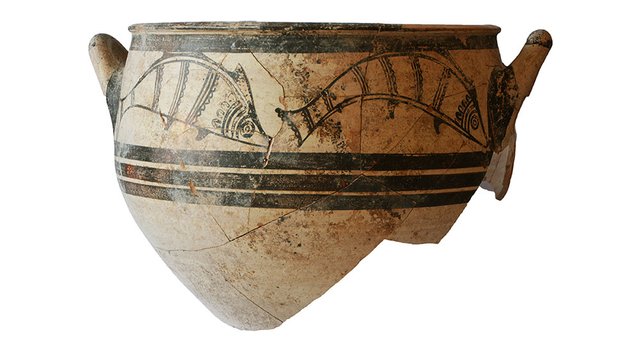
The University of Gothenburg’s Cypriote archaeology department has been leading excavations on the island of Cyprus since 2010 at a location bordering the Bronze Age city of Hala Sultan Tekke.
Using radar equipment, the team, led by Peter Fischer, an archaeology professor at the University of Gothenburg, performed a geophysical survey before the excavation.
Although farming in the area is causing erosion that affects the site, the geophysical survey exposed almost 100 underground pits. As these are excavated, some prove to be wells and others are offering pits. This year however, one of the pits turned out to be a grave. This makes the latest expedition the most successful to date.
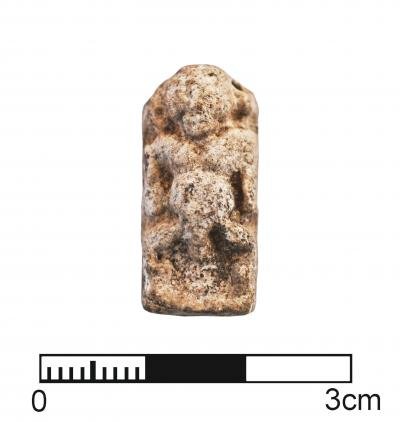
Egyptian God Bes on amulet of faïence. Image credit: Peter Fischer
The grave is located outside the city and has been described as incredibly rich. Apart from a bronze dagger, five cylinder seals and gemstones were found. Although some of these were produced locally, other come from Mesopotamia and Syria. Various golden items including Egyptian scarabs, beads, earrings and a diadem were also uncovered in the offering pit and grave. The archaeologists are however most excited by the more than 140 ceramic vessels that have been dug up. As many of these objects originate from adjacent cultures, Cyprus’ central role in long distance trade has been confirmed.
Hala Sultan Tekke covered an area of 50 hectares and existed in 1600-1150 BC. It is known that the city had far-reaching trade connections, including Sweden. The older city quarter that was uncovered in the recent expedition, dates from around 1250 BC, and the burial site was located next to it. Fisher explains that this is highly unusual as those who died during the Late Bronze Age were normally buried within the settlement.
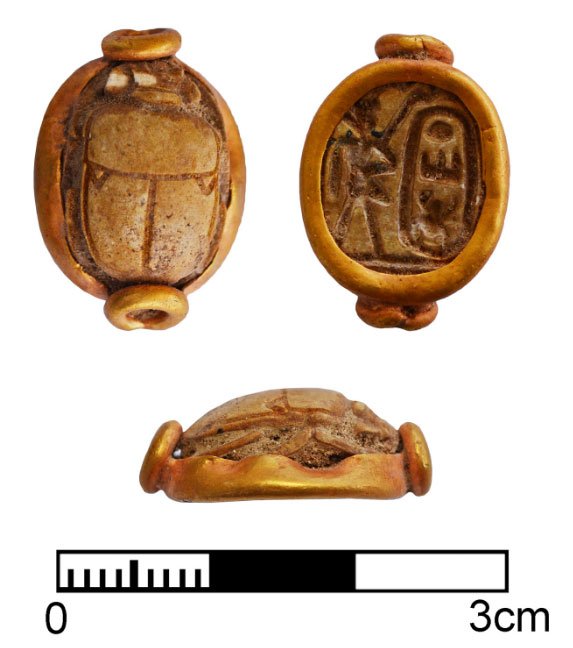
Gold-mounted scarab of steatite with the figure of Thutmosis III (1479-1425 BC); remains of blue color on scarab. Image credit: Peter Fischer.
The grave was a structure measuring 3 x 4 meters, compared to wells, which typically have a dimeter of one meter. The oldest of the nine adults found in the grave was approximately 40 years old, which is to be expected given the shorter life expectancy of the time. Eight children aged between five and ten were also found.
Many of the complete ceramic vessels found are decorated with beautiful artwork. A woman wearing an elaborate dress, a chariot drawn by two horses, animal illustrations including pictures of fish and religious symbols are all examples of the wide variety found. What the archaeologists however find most important is that many of the vessels were imported – some from Anatolia (the modern day Turkey) whilst others originated in Crete and Greece.
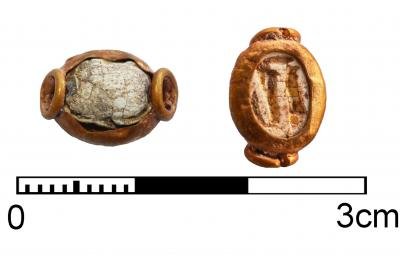
Scarab of steatite (gold-mounted), probably Egyptian 19th Dynasty, circa 13th century BC. Image credit: Peter Fischer
The archaeological information carried by the pottery has been described as invaluable. High-class Mycenaean imports (pottery from Greece) confirmed that Crete was becoming a Greek colony around that time. Although the vase was made in Greece, the motif of the woman, probably a goddess, originates in Crete. Her dress is probably an indication of how wealthy women dressed around this time and the painting thereof is highly advanced. The same motif has been found on frescos in the Palace of Knossos in Heraklion, Crete.
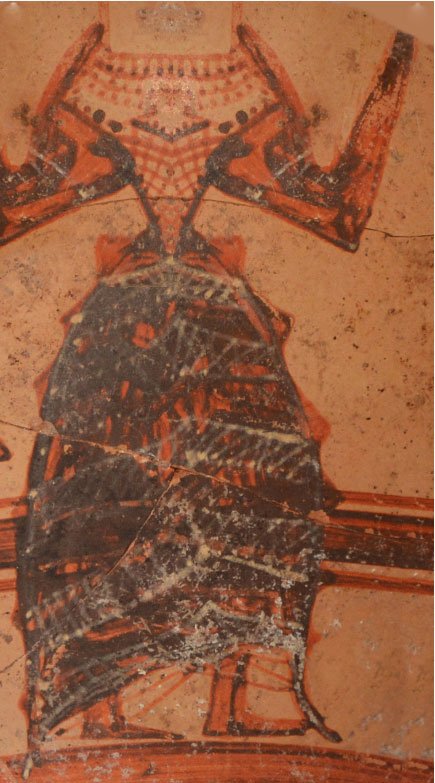
Mycenaean Greece vessel portraying a female goddess/princess dressed in Minoan (Crete) clothes. Image credit: Peter Fischer
Finds originating in Egypt include two stone scarabs that are gold-mounted. One has an illustration of a pharaoh with hieroglyphs spelling 'men-kheper-re' next to it. It is rare that archaeologists are presented with an opportunity to tie a historic person to a 3500-year-old find. 'Men-kheper-re' is a reference to Egypt's most powerful pharaoh, Thutmose III, who lived from 1479 to 1425 BC. Egypt peaked in influence and size during this time due to Thutmose conquering Mesopotamia (modern day Iraq) and Syria.
Evidence of purple dying of textiles and large-scale manufacturing was found in the city. In those times, these goods were used for trade with Anatolia, Crete, Mesopotamia, Egypt, Greece and the Levant. This would explain the rich find of imported products.
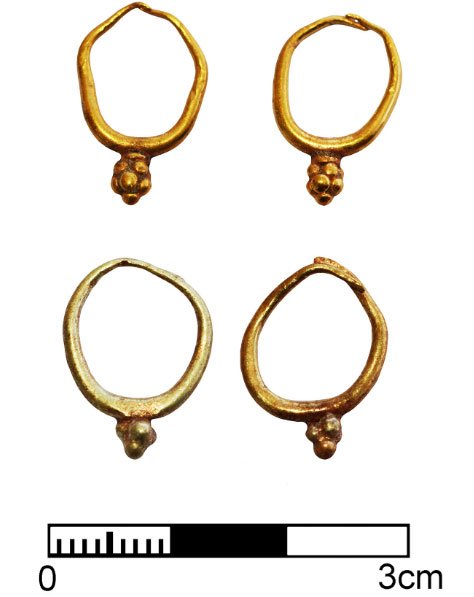
Two pairs of gold earrings, circa 1400-1300 BC. Image credit: Peter Fischer
Although the finds are dated from around 1450 BC, archaeologists have not found a city from this period. Judging by the finds, It is probably a rich city and likely to be located in an unexplored area close to the burial site. As agricultural activities threaten the archeological integrity of the area, quick action is needed to secure our cultural heritage before it is accidentally destroyed forever.

Like what you read (without annoying ads :) ) ? Then please upvote our posts and follow us for the best daily science news on SteemIt!
So you're basically just copying and pasting from sciencenewsjournal.com? Jesus dude, be original and do your own research!
@elduderino, ScienceNewsJournal.com is our website and this is our original content... You can read our into post here:
https://steemit.com/introduceyourself/@sciencenews/hi-steemit-do-you-like-science
No idea why @cheetah and @anyx don't whitelist us...
I don't think posting old content in attempts to make a quick buck from it is the right thing to do amigo. Atleast rewrite it, update and add new finds if you are going to play that game.
How do I know you are the author of this content?
How do I know that the man or woman who wrote this is getting the recognition and reward they deserve and are entitled to?